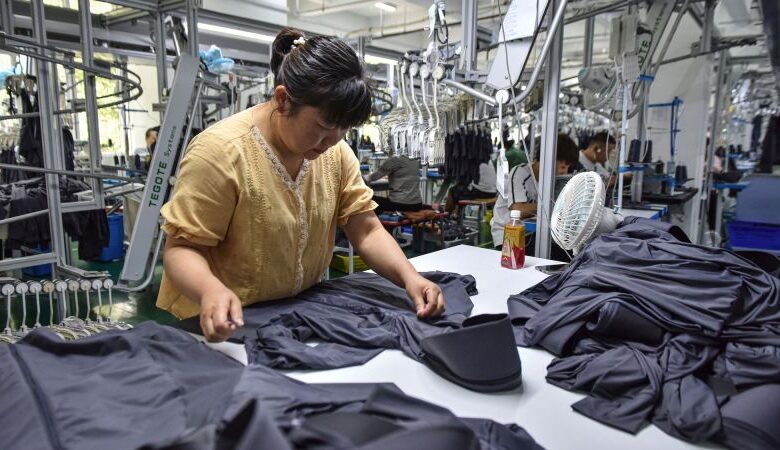China PMI: No end in sight for uneven economic story

[ad_1]
Hong Kong
CNN
—
Factory activity among China’s private firms expanded at the fastest pace in three years, a private gauge showed Monday, suggesting healthier domestic and international demand for Chinese goods.
This contrasts with the results of an official government survey Sunday that showed a contraction among larger, state-owned manufacturers, underscoring that the recovery in the world’s second largest economy remains uneven.
The Caixin manufacturing Purchasing Managers’ Index (PMI) rose to 51.8 in June, up from 51.7 in May, according to a statement from S&P Global, which compiled the survey. The numbers not only beat market expectations but also marked the sixth straight month of improvement in the index.
But the gauge conflicted with the National Bureau of Statistics (NBS)’s PMI, which was unchanged from May at 49.5, marking a second consecutive month of contraction.
The PMI is a monthly indicator of economic activity. A reading above 50 indicates expansion, while anything below that level shows contraction.

“The divergence” between the Caixin and the official PMIs has widened further from May and is likely because of differences in the sectors covered, said analysts from Goldman Sachs on Monday.
The Caixin survey covers more export-oriented and consumer-related companies. The official PMI, however, is tilted more towards manufacturers that produce industrial materials — including steel, cement, and chemical — making them more vulnerable to a slowdown in fixed-asset investments.
Analysts believe that the current data reflects an economic reality characterised by strong exports and consumption, but softer investment.
“Demand for consumer and intermediate goods was stronger than that for investment goods,” said Wang Zhe, senior economist at Caixin Insight Group.
“Overall, the manufacturing sector kept improving in June, with supply, domestic demand, and exports continuing to grow,” he added.
Customs data for June are not available yet, but statistics for May showed that the country’s exports jumped 7.6% from a year earlier, beating analysts’ forecasts.
Still, manufacturers are less optimistic about the outlook, as recent tariff announcements from the US and European Union have damped their sentiment.
“The gauge for future output expectations … fell by more than three points from the previous month, marking the lowest since November 2019,” Wang said.
“Concerns expressed by surveyed companies [in the Caixin index] were focused on prominent downward pressure on the economy and intense market competition,” he added.
Last month, the EU announced additional tariffs of up to 38.1% on electric vehicles imported from China,because of what it sees as Beijing’s unfair support for companies that undercut European carmakers.
The provisional tariffs are set to apply by July 4, while the investigation will continue. The duties will then be finalized on November 2 at the end of the probe.
The EU’s decision came a month after the United States quadrupled tariffs on EVs from China, from 25% to 100%, a move aimed at boosting American jobs and manufacturing.
[ad_2]
Source link




